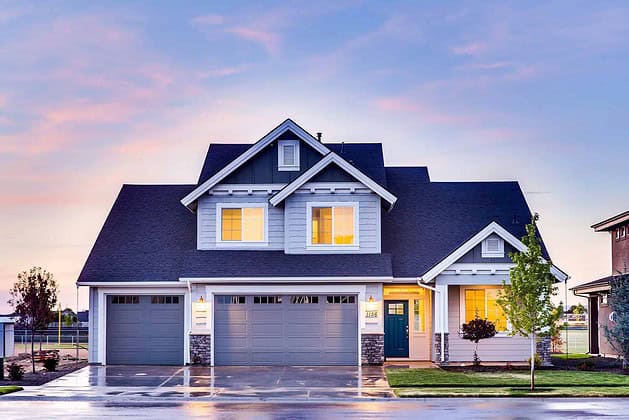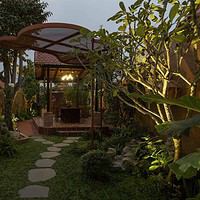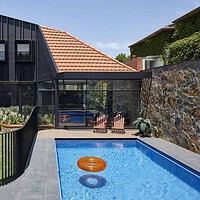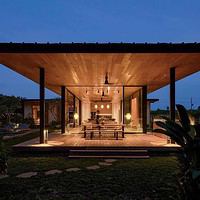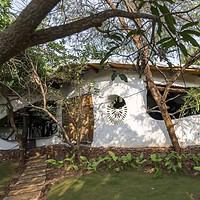It’s the American dream to have to own a house of your own somewhere down the line especially after you graduate. But sometimes, apart from the usual mortgage that we always have to account for, there are plenty of other hidden home ownership costs that go right over our heads as soon we sign the official papers to owning a property. This is in spite of all the help we get from brokers, real estate agents as well as attorneys.
But hidden costs are something that fresh college graduates deal with, it can also be newlyweds, a middle-aged couple thinking about downsizing or even seniors considering a move to retirement communities. If you take into account the size of the average American mortgage, you’d be really surprised.
And we thought renting itself was eating away at all of our hard-earned investments, huh? It turns out that just because we own a house doesn’t mean it’s all of a sudden “free” for us to live it.
If your house tenant contemplating owning a house for yourself or your family, then we’ve taken the liberty of listing some of the hidden costs associated with home ownership that you have to account for should you decide to go for it.
Easy-To-Forget Monthly Home Ownership Costs
1. Opportunity Cost
Opportunity costs by definition, means the next best benefits or opportunities that one misses out on when they choose something over another. When it comes to houses, the next best alternative of owning a house is renting one. But that money that people used to buy a house could also be used for growing as well as earning income, or making investments in stocks, bonds or even a “high interest” savings account.
So if you were to rent instead of buying a house with home ownership costs of £250,000, you could save yourself £250,000 and even a possible depreciation in house value. Plus, you’d only be paying for rent instead of a mortgage.
Therefore, the opportunity cost of buying a house would be renting instead of paying for a mortgage. On the other hand, if the prices of houses go up, you’ll be missing out on capital appreciation. And if the price of houses goes down, then you’ll be safe by not losing any capital value.
The point is that if you own a house and don’t earn a return for it, then there’s no value in buying the house in the first place.
2.Property Taxes
When calculating property tax, it would be wise of you to include both property taxes and loan amounts, instead of just including the principal and interest rate ratio.
Those people usually get a mortgage on their house, and have to have their property taxes in escrow. This way they’ll be able to pay for their mortgage and put aside money for property taxes.
But if you don’t escrow your taxes, you can calculate the annual property tax by dividing them by 12 and then have it added to your estimated monthly home ownership costs. You can look at this information in an MLS listing.
It’s also worth noting that taxes tend to go up annually. So if such a thing occurs, be sure to have an allowance for your budget.
3. Water Filtration
Clean water is not an option, but a necessity. And even though the American drinking water quality is one of the safest in the world, pollutants like pesticides, heavy metals, pharmaceuticals, and hormones are found at times in the country’s water supply.
The average cost for installing a water treatment and purification system for households is $1784 as of this writing. Although the range is somewhere between $862 and $2771, which depends on a list of factors. It also depends on the kind of water purification system homeowners would like to install, be it a distiller, all have systems or reverse osmosis.
4. Maintenance Of Your Water Filtration Systems (Including Softeners)
If you thought that houses only had hidden costs associated with home ownership, you are sadly mistaken. The hidden costs for water filtration systems usually include equipment rental fees, separate installation fees, as well as monthly maintenance fees. Besides that, disposing of waste materials, such as used filters, and cartridges spent from activated carbon units, further accumulate the cost of water treatment and have to be accounted for the purchase price. This is where you need to ask the dealer from whom you are purchasing the water filtration system about all the costs that come with the system, especially regarding its installation and maintenance.
Water filtration systems also come with a water softener component that tackles hard water by removing minerals that could potentially be detrimental to the overall health of homeowners. The problem with salt-based water softeners is that you’re not paying just for the unit. During the average 15 to 20 year cycle of the softener, you’ll be incurring three main expenses, including routine maintenance, salt bags, and the extra cost of paying for your water twice.
If you were to consider water softener alternatives such as a reverse osmosis system, you will be able to save up to $11,950 annually, which is accounting for salt replacement, electricity, and operating costs.
To learn more about how long water softeners last, visit this site: https://americanhomewater.com/how-long-does-a-water-softener-last/
If you’re in the Phoenix, Arizona area you can actually visit them yourself at:
+1 602-993-0083
23439 North 35th Drive #7
Glendale, Arizona 85310
5.Property Insurance
There are plenty more monthly home ownership costs then there is simply renting an apartment with only a single bedroom. Even with your renter’s insurance at hand, you’re still going to have to pull a lot more when it comes to home insurance. Plus, there are several other factors to consider regarding home insurance.
And buying an older home with a lower price tag when some of the other recent ones will only be more financially hampering for you in the long-run. This is because the plumbing, heating, and electrical systems of older houses are more prone to decay or disaster to be exact. And don’t even think that insurance companies won’t go through your credit record or even raise their rates based on your credit score, because they can.
6. Transaction Costs
A house’s closing and selling costs are some of the scariest costs associated with homeownership. And if you think you won’t account for any more costs after this, think again. Some of the extra fees that are attached with transaction or closing costs include application fees, attorney fee, escrow fee, courier fee, credit report, appraisal, home inspection, homeowners insurance, and more.
Although the closing costs vary greatly depending on where you live, the house that you buy, as well as the kind of loan you select. But more or less, most homeowners account for the kind of costs that we’ve already mentioned.
Closing costs can even go up to 10% by the time a deal has been decided upon. This means that there could be between $400-$1000 worth of hidden, unexpected costs that you need to settle.
Conclusion
In the end, our goal is to simply give you a realistic view about home ownership and the kind of costs that you will account for should you decide to go ahead with this. Our only advice is that you take your overall budget into account as well as how much you can afford realistically before you decide to invest in a home mortgage for you and/or your family.

